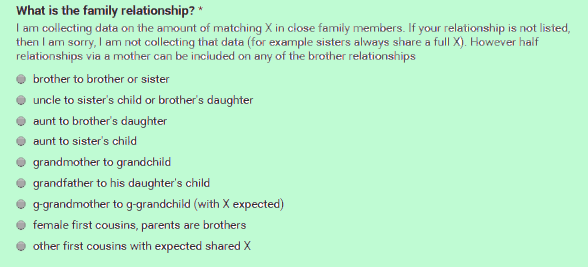The X chromosome has always fascinated me. Whether it is trying to track down the family mild blue/green color blindness or just observing X inheritance patterns in my family and others.
This morning I woke up all excited because I realized that a large piece of my X chromosome comes from my Norwegian 4th grandmother Metta Olsdatter Ve (Fatland) born 1729 on farm Fatland, likely in the house pictured here. She died in 1805 on farm Ve (or Wee) so made it into the 1801 census.
So how did I figure this X inheritance out? My Dad and I share 33.5 cMs of the X chromosome with my fourth cousin once removed Maria and her mother (so it is phased). They descend from a different wife of our common ancestor Aamund Bjørnsen Tvetden. So these 3326 SNPs of X located from 68M to 113M must come from him and therefore from his mother Metta.
No I did not share this insight with my husband when he brought me my morning coffee. I know better than to make his eyes glaze over … only other genetic genealogy aficionados would appreciate this, so I am sharing it here instead.
By the way I am still collecting X statistics, so click here for more on that and please contribute yours



